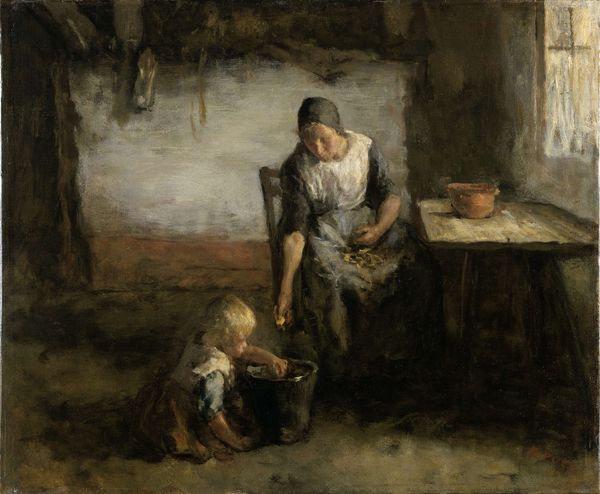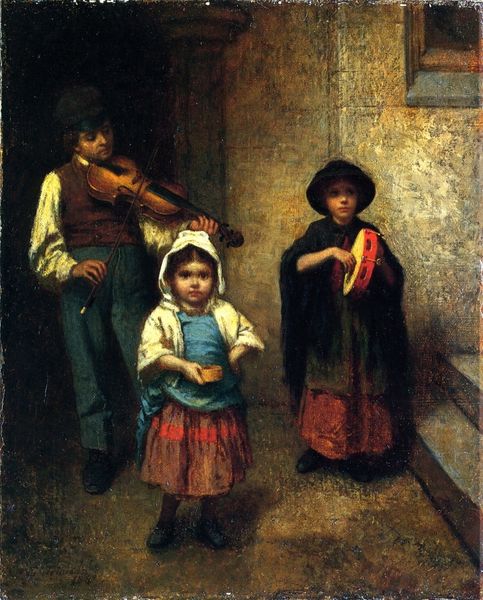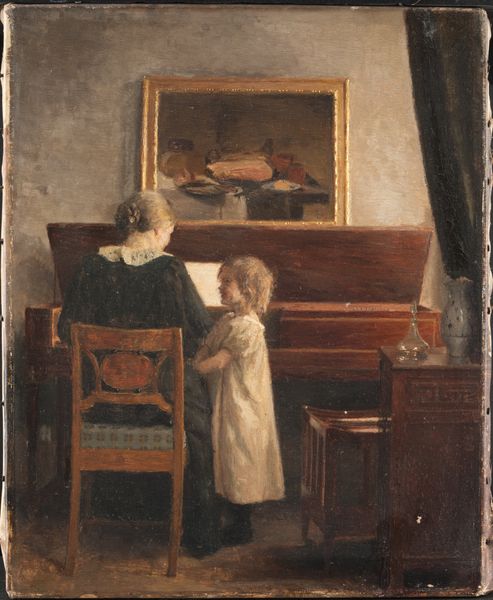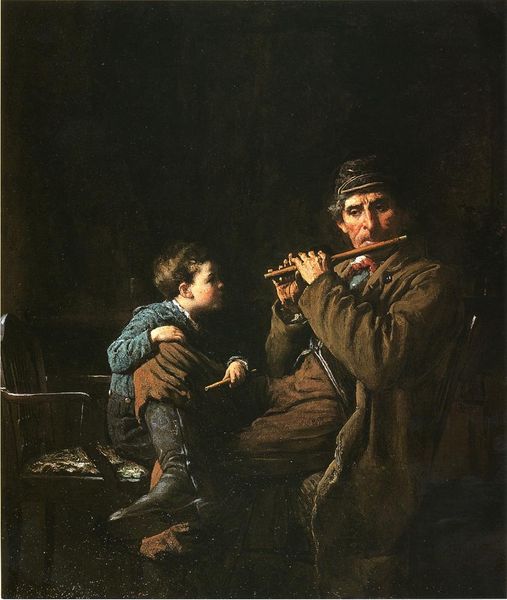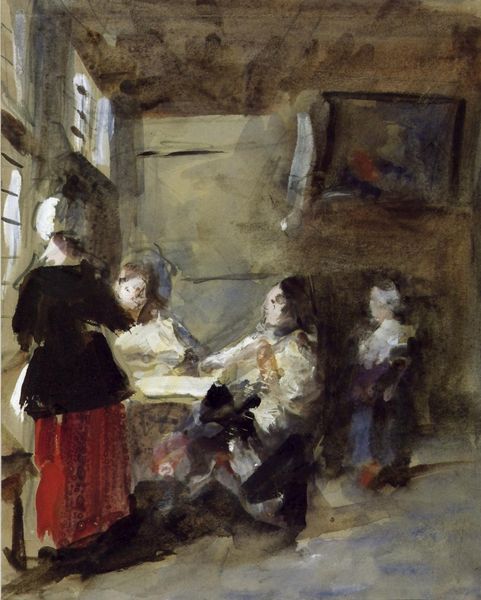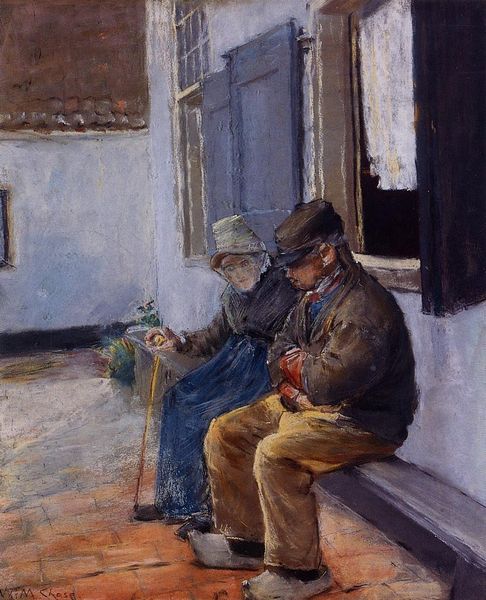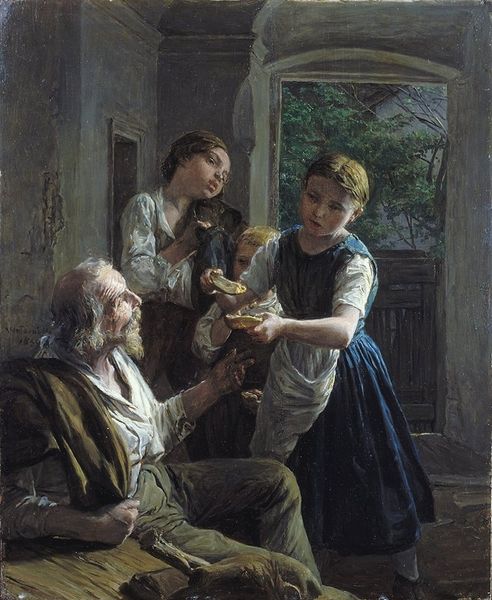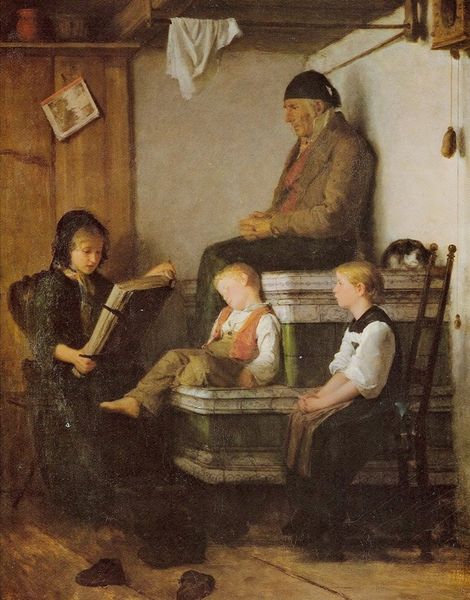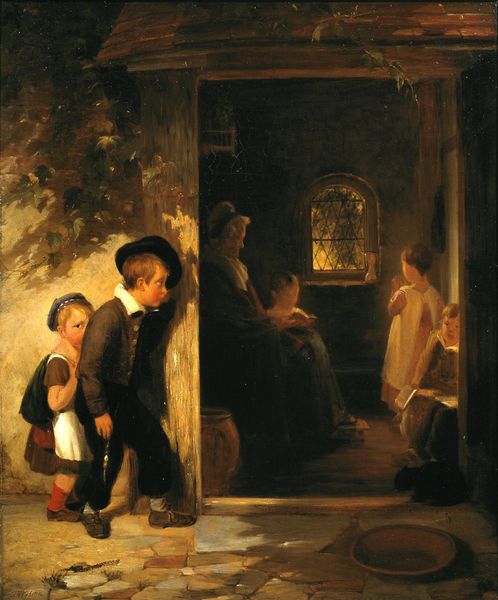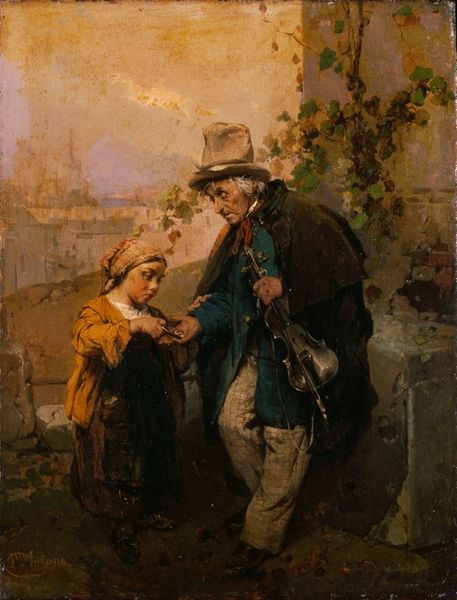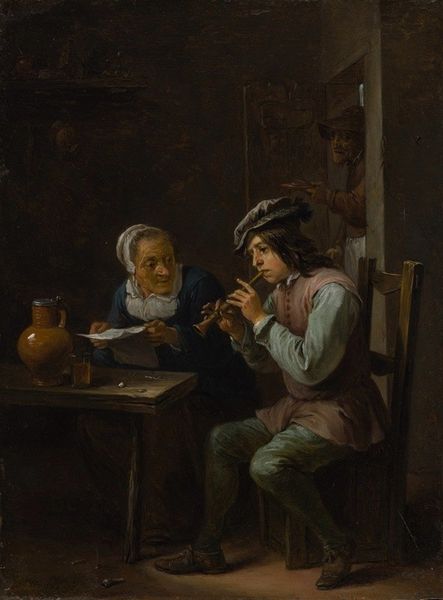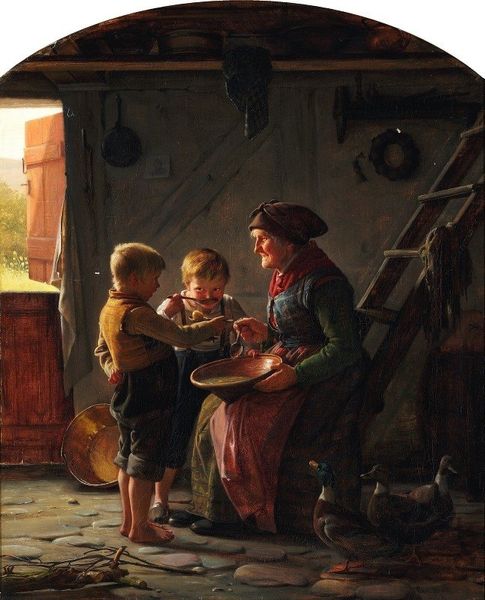
A Russian Salesman of Sweet Cakes at the Helsinki South Harbour Market, sketch 1873
0:00
0:00
painting, oil-paint
#
portrait
#
figurative
#
painting
#
impressionism
#
oil-paint
#
charcoal drawing
#
oil painting
#
genre-painting
#
portrait art
#
realism
Copyright: Public Domain: Artvee
Editor: Here we have Albert Edelfelt’s “A Russian Salesman of Sweet Cakes at the Helsinki South Harbour Market, sketch,” created in 1873, using oil paint. There’s something really poignant about the contrast between the merchant and the children. How do you interpret this work? Curator: I see here a representation of labour and consumption within a specific social context. Edelfelt is not merely depicting a scene, but presenting the structures of the market – the seller with his wares, the children representing potential consumers. The very materials used - oil paint, readily available yet requiring skill – are part of the story. Consider the means of production inherent in this painting: from pigment creation to canvas weaving, each contributes meaning. What do you think this piece communicates about class? Editor: I hadn't considered the materiality of the piece itself as part of the message. The dark colors also hint at a lower class or somber mood. It speaks to how class creates an inescapable cycle, and it almost feels as though that cycle extends to us as viewers. Do you think Edelfelt meant for the viewer to also feel complicit? Curator: Precisely. This invites us to think about our own consumption and its implications. The blurring between “high art” (the painting) and “low art” (the street scene) questions the very boundaries we impose. Did the act of sketching elevate this vendor to a "high art" subject? The work encourages us to challenge the established values placed on different types of labor and lived experiences. Editor: I’m now viewing the painting through an entirely new lens. Thanks, I realize I focused mostly on the narrative and symbolism and hadn't spent enough time considering how materials and modes of production inform our viewing experience. Curator: Indeed. It’s in understanding those elements that we can truly begin to understand art’s relationship to society.
Comments
No comments
Be the first to comment and join the conversation on the ultimate creative platform.

